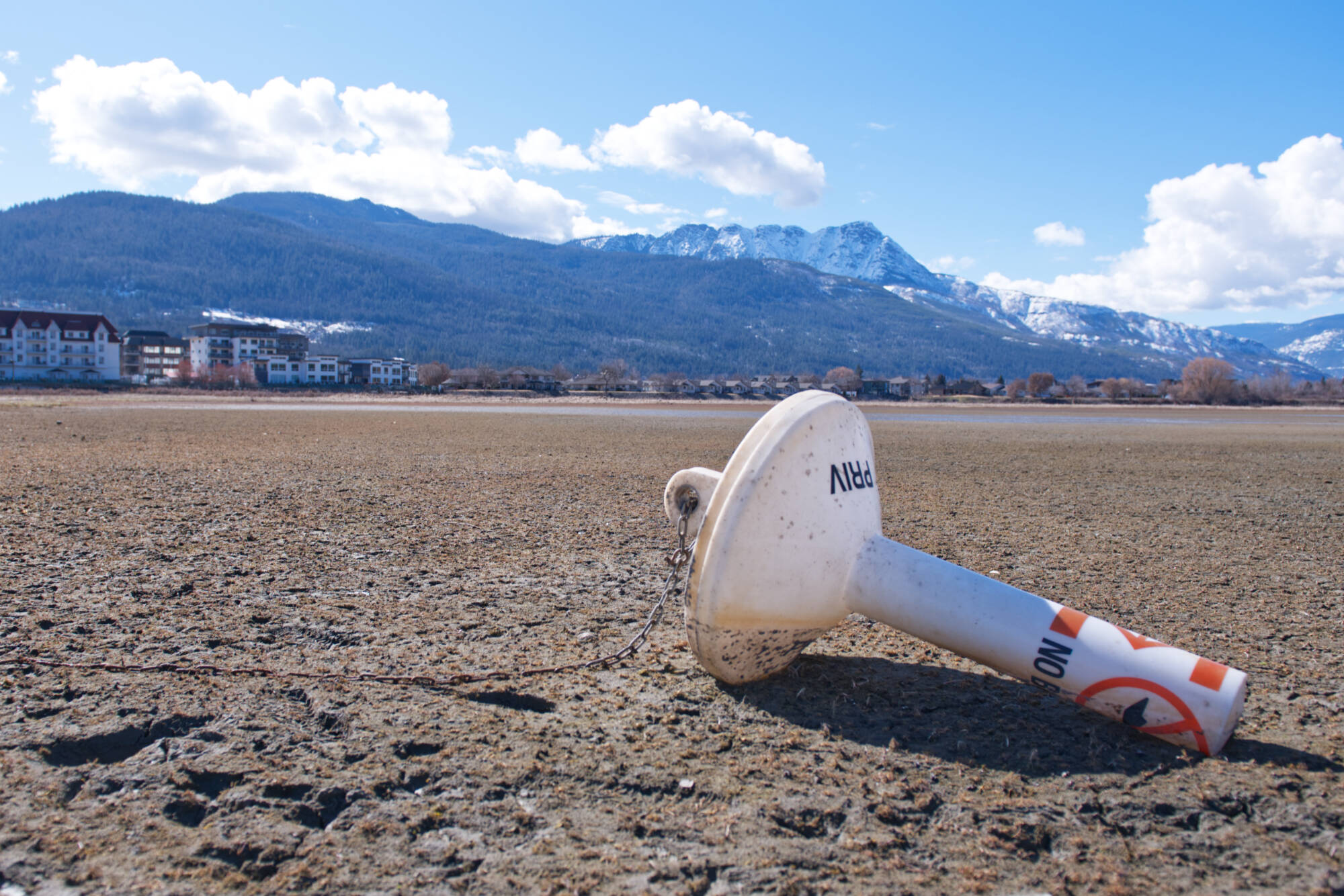Shuswap Lake may have reached a new low for April.
City of Salmon Arm data show the lake’s level stayed between 344.5 and 345 metres since December 2022. As of April 1, 2023, it was at 344.772 m, the lowest measurement for this date reflected in the data, which includes consistent measurements from 2003 to present. It’s also lower than April-May measurements from 1996 to 2000. By and large, the lake, as of April 1, is typically above the 345-metre mark. The only time in the data when it’s been lower than 344.772 m was December 2022, when it went as low as 344.751 metres.
The low lake level recently prompted the Columbia Shuswap Regional District (CSRD) to issue a warning to the public about the use of several boat launches including at Magna Bay in the North Shuswap, the Harbour and Whitehead road launches in the South Shuswap, the Markwart Road boat launch in Sorrento and the Windsor Road launch in Swansea Point.
“Using the launches at this time could damage your boat. Please do not attempt it,” warned the CSRD.
According to the B.C. government’s March 1 snow survey and water supply bulletin, the province experienced La Niña conditions this winter, meaning increased late season snowfalls and the delayed onset of snowmelt.
“By March 1st, nearly 80% of the seasonal snow pack has accumulated, on average,” reads the bulletin. “With a couple more months of potential snow accumulation, seasonal snow packs can still change significantly based on weather.”
As of March, snow pack throughout B.C. ranged from 59 to 124 per cent of normal. In the South Thompson Basin, where Salmon Arm is located, snow pack was at 105 per cent of normal, while the North Thompson was at 91 per cent.
Read more: Snowpack higher than normal in most of B.C.
Read more: Rain, unseasonable warmth, unstable snowpack, raise flood, avalanche concerns in B.C.
Looking ahead to spring freshet, Tom Hansen, co-ordinator for the CSRD’s Shuswap Emergency Program, commented, “The main variables that affect what happens now are how quickly the temperature warms up, and for how long, and how much rain we get, especially rain on snow during freshet.”
“Localized heavy rainstorms can increase the risk of flash flooding or debris flows on steep creeks and smaller systems,” Hansen added.
While the city keeps track of lake levels, the Larch Hills Nordic Society has been monitoring snow depth in the hills for about 17 years. Measurements are done early January and early March. This January, measurements showed snow depths were eight per cent above the 17-year average at the chalet (1,000-metre elevation), about average at South Hub (1,050 m) and 11 per cent less at Cec’s Cabin. March measurements showed snow depths well above the 17-year average at all four elevations, especially at the chalet/1,000-metre elevation where the snow depth was measured at 79 centimetres – 25 per cent above the 17-year average.
lachlan@saobserver.net
Like us on Facebook and follow us on Twitter
Sign up for our newsletter to get Salmon Arm stories in your inbox every morning.

